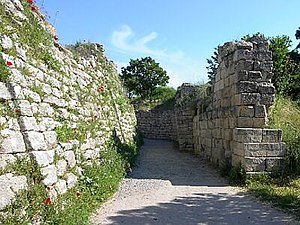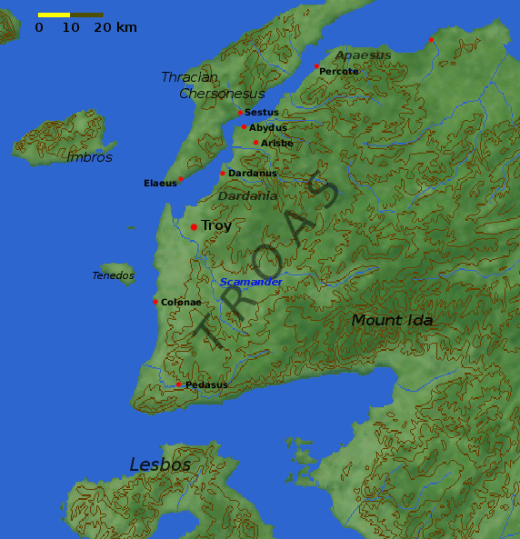|
Greek city of Kolone in Troas
Bronze 10mm (1.40 grams) Struck circa 350-310 B.C.
Certification: NGC Ancients Ch XF 6156465-005
Reference: Sear 4075 var.; Klein, KM 46, 315; SNG Tübingen 2647
Head of Athena right, wearing close-fitting crested helmet.
K – O – Λ – Ω – N – A – Ω – N between the eight rays of a large star.
The inhabitants of Kolone were, like those of several other towns of the Troad, removed to Antigoneia/Alexandreia circa 310 B.C..
You are bidding on the exact item pictured, provided with a Certificate of Authenticity and Lifetime Guarantee of Authenticity.
Colonides or Kolonides (Ancient Greek: Κολωνίδες), also known as Colonis or Kolonis (Κολωνίς) or as Colone or Kolone (Κολώνη), was a town in the southwest of ancient Messenia described by Pausanias as standing upon a height at a short distance from the sea, and 40 stadia from Asine. The inhabitants affirmed that they were not Messenians, but a colony led from Athens by Colaenus. It is mentioned by Plutarch as a place which Philopoemen marched to relieve leading to his capture and execution; but according to the narrative of Livy, Corone was the place towards which Philopoemen marched.
Its site is located near the modern Vournaria.
The Troad or Troas is the historical name of the Biga peninsula (modern Turkish: Biga Yarımadası, Greek: Τρωάς) in the northwestern part of Anatolia, Turkey. This region now is part of the Çanakkale province of Turkey. Bounded by the Dardanelles to the northwest, by the Aegean Sea to the west and separated from the rest of Anatolia by the massif that forms Mount Ida, the Troad is drained by two main rivers, the Scamander (Karamenderes) and the Simois, which join at the area containing the ruins of Troy. Grenikos, Kebren, Simoeis, Rhesos, Rhodios, Heptaporos and Aisepos were seven rivers of the Troad and the names of the river gods that inhabited each river.

The Troad gets its name from the Hittites’ name for the region, Taruisa. This identification was first put forth by Emil Forrer, but largely disputed by most Hittite experts until 1983 when Houwink ten Cate showed that two fragments were from the same original cuneiform tablet and in his discussion of the restored letter showed that Taruisa and Wilusa (Troy) were correctly placed in northwestern Anatolia. According to Trevor Bryce, Hittite texts indicate a number of Ahhiyawan raids on Wilusa during the 13th century BC, which may have resulted with the overthrow of king Walmu.
Bryce also reports that archeological surveys conducted by John Bintliff in the 1970s show that a powerful kingdom that held sway over northwestern Anatolia was based at Wilusa (Troy).
The kings of Pergamum (now Bergama) later ceded the territory of the Troad to the Roman Republic. Under the Empire, the territory of the Troad became part of the province of Asia; under the later Byzantine Empire, it was included in the thema of the Aegean Islands. Following its conquest by the Ottoman Empire, the Troad formed part of the sanjak of Biga.
In the New Testament
Paul visited Troas. He also refers to Troas when he asks his fellow worker Timothy out of Ephesus, to get his coat there.[3] This was a journey of about 500 kilometres (310 mi). Paul was accompanied by Luke.

|














